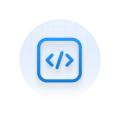Introduction
The desire to automate work patterns and their flow is inherent to all industries. In fact, irrespective of the type of work we do, most of us would have interacted with some tool or solution that automates at least a part of our daily workload. From aiding in tasks like sorting and indexing emails; inputting data into a sheet, and managing work-vital digital documents, to completely automating crucial business processes, workflow automation is upsurging as an essential tool for day-to-day life in successful businesses.
Today, artificial intelligence is bringing a more comprehensive range of tasks to workflow automation, allowing us to automate processes that would have been impossible before, such as the ones mentioned above. Other benefits of integrating artificial intelligence into workflow automation include improved decision-making, predictive analytics, image and speech recognition, and robotic process automation. Automating workflows can be made much easier with the help of LLMs (Large Language Models), which are advanced artificial intelligence systems that recognize and generate human-like text based on input prompts.
Let’s explore how LLMs can streamline and automate workflows.

What is an LLM?
An LLM, or Large Language Model, is a type of artificial intelligence technique that produces human-like text based on input. For example, OpenAI’s GPT-4 model is a classic example of a large language model trained on vast amounts of data to understand context, generate meaningful responses to user prompts, and perform complex tasks.
With LLM, you can seamlessly integrate language processing capabilities into your existing workflows. LLM can be incorporated into your data pipelines, content generation frameworks, and customer engagement platforms to automate support interactions, generate personalized content, or extract insights from vast data sets.
Thus, LLM-based software enhances and optimizes business operations through powerful language processing.
Using LLMs To Automate Workflows
The Large Language Models (LLMs) provide AI systems with additional depth, enabling them to not only process large amounts of data but also understand the needs of users based on natural language inputs, allowing them to efficiently and effectively process and present the data. With the ability to process language inputs, more automation endeavors can be undertaken, especially when it comes to user interaction and engagement.
Cost Reduction Through LLMs
Automating Customer Service
LLMs can be employed to handle customer inquiries efficiently. In customer service, LLMs can make a difference by assisting customers in a more conversational manner. Answering frequently asked questions, making product recommendations, and resolving customer complaints (like Where is my order? & missed deliveries) might be part of this process. For example, a chatbot powered by GPT-4 can provide quick, accurate answers to customers’ questions, reducing waiting times and reducing the need for human customer service agents.
Enhancing Content Creation
Informative and engaging content for your websites based on a topic or keyword can be generated using LLMs. This greatly saves the time and resources engaged in content creation, while improving the content quality. In addition, content creation costs can be reduced significantly by using AI-generated content for marketing campaigns, social media updates, and website copy.
Revolutionizing Employee Onboarding
Customized Training Solutions
LLMs can create personalized onboarding experiences for each employee. Amazon, for example, uses AI to tailor individual training programs for warehouse employees, ensuring they have the skills and knowledge they need for their specific roles.
Intelligent Assistance
New employees can benefit from AI-driven virtual assistants that assist them with onboarding. IBM’s Watson Assistant, for instance, provides personalized answers to employees’ questions and assists them in navigating company systems.
Elevating the Employee Experience
Collaborative Tools
LLMs can improve cross-team collaboration by removing language barriers and providing summaries of complex information. Google Translate & DeepL, for example, uses AI to provide real-time language translation, enabling teams from diverse backgrounds to communicate & collaborate easily.
Workflow Optimization
LLMs can analyze employees’ daily tasks to detect bottlenecks and inefficiencies. This approach facilitates efficiently streamlined workflows with better allocation of resources. For example, JPMorgan Chase and Co. deployed its COIN artificial intelligence system to analyze and extract relevant data from legal documents, saving countless hours of manual labor.
Wrapping Up
Large Language Models are more than just a technological advancement; they represent a paradigm shift in business operations. Using LLMs can reduce costs, enhance employee engagement, and speed up workflows while reducing costs. As artificial intelligence advances, companies that take full advantage of LLMs in their business operations will be pioneers in setting an example of how technology can be leveraged to maximize efficiency, productivity, and employee satisfaction.
References
- https://nanonets.com/blog/leveraging-llms-to-streamline-and-automate-your-workflows/
- https://www.mckinsey.com/industries/metals-and-mining/our-insights/succeeding-in-the-ai-supply-chain-revolution?ssp=1&darkschemeovr=0&setlang=en-XL&safesearch=moderate
- https://www.linkedin.com/pulse/accelerating-business-operations-llm-unleashing-power-tanmay-pathak/
- https://roadmap.sh/guides/introduction-to-llms
- https://www.ml6.eu/blogpost/state-of-the-llm-unlocking-business-potential-with-large-language-models
- https://medium.com/neuml/getting-started-with-semantic-workflows-2fefda6165d9
- https://www.glean.com/resources/llm-gpt-enterprise
Edited By – Naga Vydyanathan



.png)
.png)

.png)

.png)
.png)
.png)



%201.png)

%201.png)

